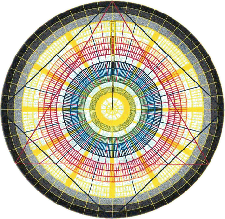
...he is believed to cure, like all doctors, and to perform miracles of the fakir, like a magicians, whether primitive or modern. But beyond this, he is a psychopomp, and he may also be a priest, mystic, and poet...
...Through the office of the shaman, the society at large is brought into close and frequent encounter with the numinous archetypal symbols of the collective unconscious. These symbols retain their numinosity, immediacy, and reality for the society through their constant reaffirmation in shamanic ritual and through the shaman's epic narration of mythical scenarios and his artistic production... (The Invisible Landscape. Dennis and Terrence McKenna) >./continue\.<